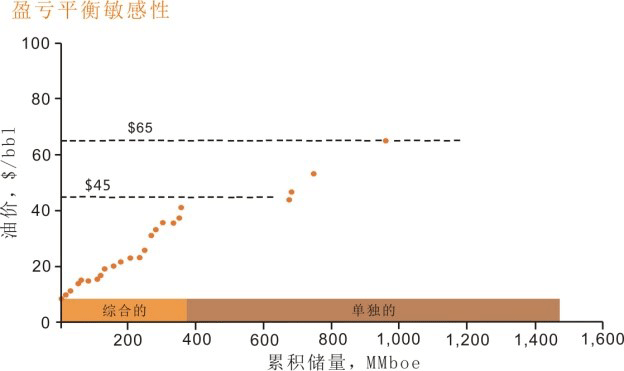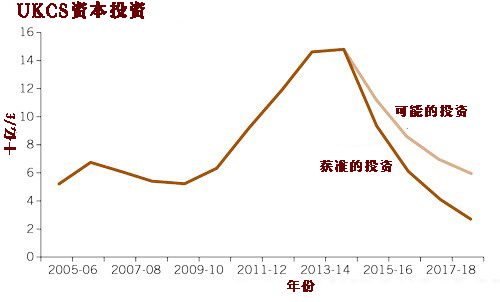The number of new offshore field development approvals on the UKCS declined sharply from 2012, up to and including the first half of 2015. Hannon Westwood recently examined 32 near-term developments (NTDs)-appraised discoveries likely to be developed within 5 years-representing a contingent resource volume of 16 billion bbl of oil. The report determined that 60% of these projects remain economic at oil prices below $60/bbl.
Despite this, the firm says there is little sign these assets have real development potential, opening the possibility that a large volume of potentially commercial UKCS oil resources will be stranded.
Contributing factors
While the loss of momentum correlates with weakening oil prices, other factors are also influencing the trends in development approvals. The introduction and subsequent expansion of field allowances between 2009 and 2010 contributed to the strong rise in development approvals through to 2012. According to Hannon Westwood, 81% of developments since 2009 have qualified for one of the available field allowances.
The sharp decline in oil’s price since those 2012 and earlier approvals, particularly starting in September 2014, is a major concern that may have far reaching implications for future investments and ultimate recovery from the UKCS. Oil & Gas UK’s (OGUK) medium-term capital forecast for the region predicts a sharp decline in investment as fewer projects are executed.
Three other factors contributing to the declines in field approvals and consequent capital investment include:
Escalation in capital and operating costs.
Poor access to export infrastructure.
The technical and commercial characteristics of the area’s undeveloped discoveries.
Earlier in 2015 , OGUK called for a 40%/boe cost reduction to ensure a sustainable future for UKCS developments. The trade group documented an 8% increase in operating expenditures in 2014 with an average operating cost of £18.50/boe last year, up from £17/boe in 2013.
Ongoing UKCS megafields
Hannon Westwood’s study reviewed NTDs at $65 and $45/bbl oil. Larger potential resource developments-such as the Rosebank and Bressay fields-stood out but not without obstacles. Rosebank is a deepwater field with a difficult reservoir (i.e. intermixed sand and volcanics). Bressay is in 400 ft of water, but is a shallow high net-gross reservoir containing ultraheavy oil with a small free gas cap.
“Legislation has helped some of these assets-in fact one allowance was targeted particularly at Rosebank and another at heavy oil-however, this was before the oil price collapse and since then a new universal investment allowance has replaced the older allowances,” said Andrew Vinall, director at Hannon Westwood.
The $10-billion Rosebank development led by Chevron is one of the UK’s largest. Discovered in 2004 in Blocks 213/26 and 213/27, Rosebank is estimated to contain a recoverable 240 MMboe. The project lies 175 km northwest of the Shetland Islands close to the limits of the UK territorial waters in 1,115-m water depth. The operator delayed its final investment decision in 2013 due to rising costs, but the project has since moved closer to fruition. In August 2015, Bluewater Energy Services BV was awarded a contract for the turret and mooring system for the project’s FPSO. The vessel is under construction at Hyundai Heavy Industry’s yard in Ulsan, South Korea, with an expected completion date in November 2016.
Rosebank’s main difficulties have been characterized, and opportunities for investment reviewed, around the themes of ownership, technology, project execution, and funding. The project is slated for first production in 2017. Chevron is the operator (40%) with partners Statoil ASA (30%), OMV (20%), and Dong Exploration & Production (10%).
Another NTD under way, the Mariner heavy oil field, lies to the southeast of Rosebank, 150 km off the Shetland Islands, in Block 9/11a in 105 m of water. Schlumberger began a 4-year integrated drilling and well services contract in January 2015 for operator Statoil (OGJ Online, Dec. 19, 2014).
The 22,400-tonne steel jacket for the Mariner A production and drilling platform was delivered to the site in August in 2015. Statoil expects first production in 2017 from two reservoirs holding a combined 250 million bbl.
Statoil holds a 65.11% interest in Mariner with partners JX Nippon Exploration & Production (UK) Ltd. and Dyas Mariner Ltd. holding 28.89% and 6%, respectively.
Meanwhile, as commodity prices remain weak and uncertainty continues over the timing of recovery, companies are continuing to focus on cost reduction and supply chain efficiency. For those seeking to identify investment opportunities created by the prevailing environment (including operators, service providers, and financial institutions), NTDs are worthy of attention.
Outcomes
All told, Hannon Westwood’s findings show that 770 MMboe (40% by volume) of NTDs are economic at $45/bbl. This number increases to 60% at $60/bbl. “This would improve if further cost savings can be found,” Vinall said.
Project execution and funding will continue to challenge marginal NTDs held by smaller owners with less capital. Access to infrastructure and sustainable tariffs will play a part for those needing a host hub. Vinall told OGJ, “Clustering may prove the solution to a subset of these and could benefit fromthe cluster allowance.”
NTDs with larger potential resources will most likely maintain their momentum in the current environment as part of short-term UKCS development. While Hannon Westwood reports devising this study using many complex, interrelating factors, higher operating costs and lower oil prices could still strand a majority of the UK’s offshore resources until greater efficiencies are found and new solutions deployed.

 石油圈
石油圈



